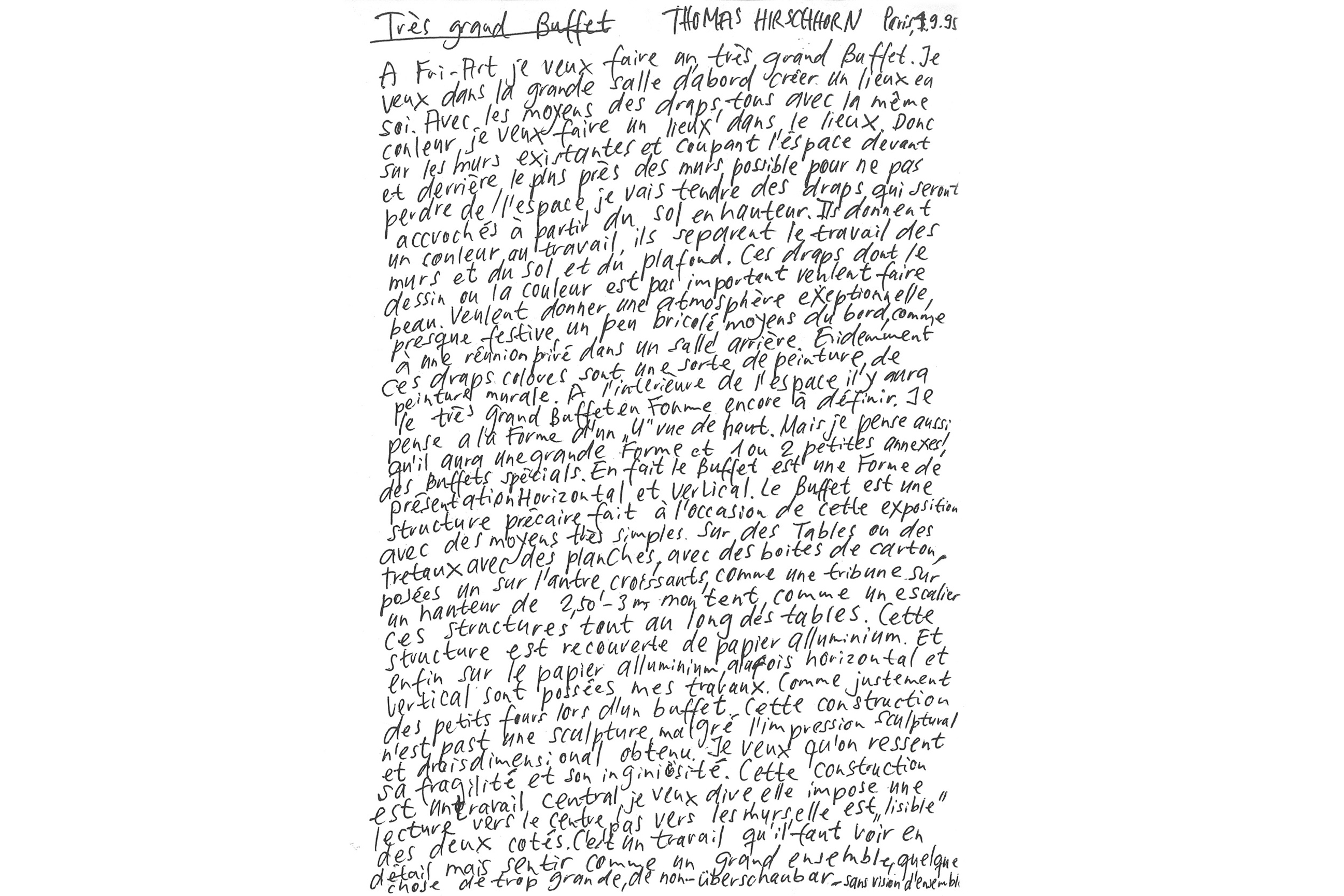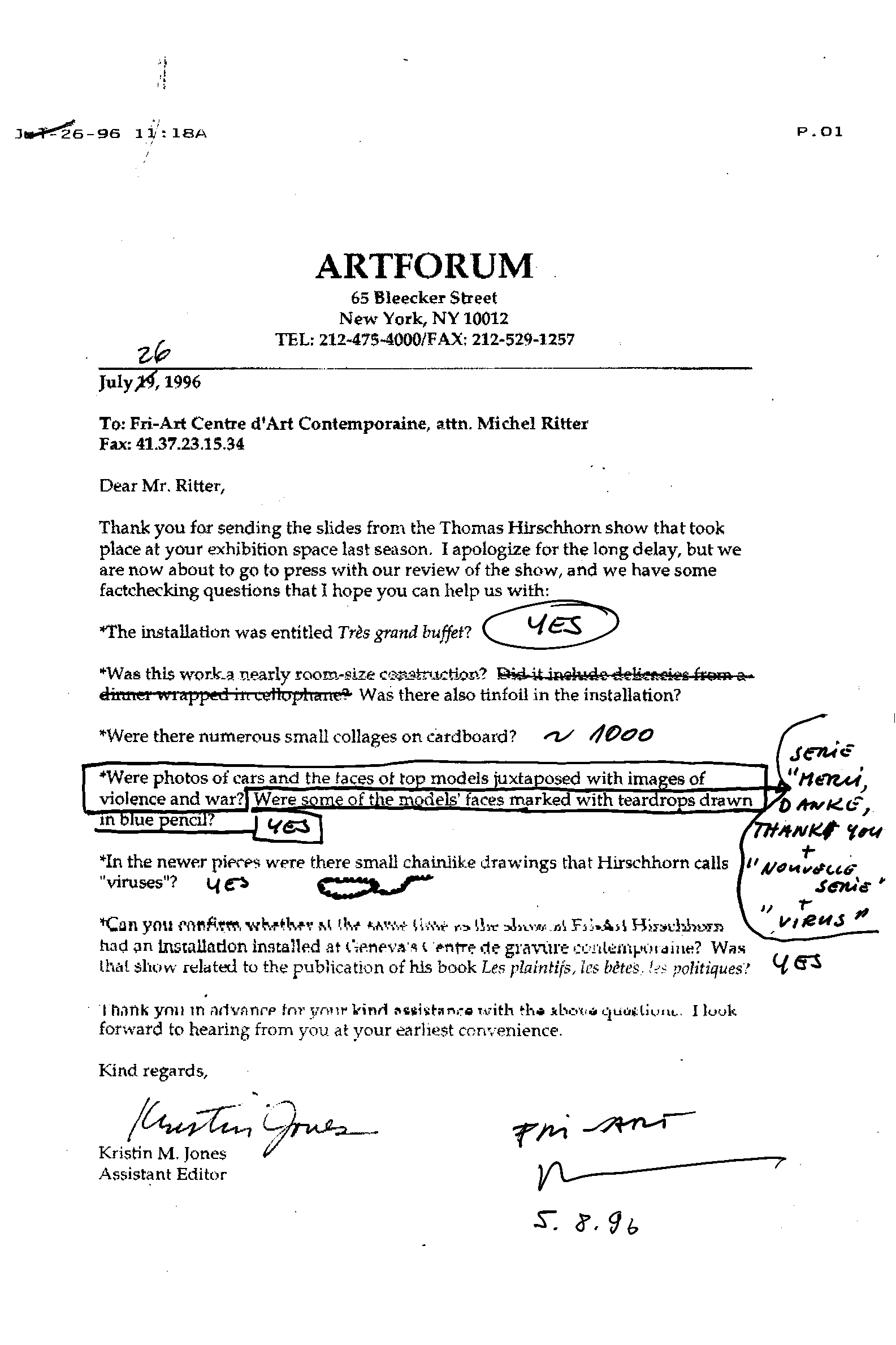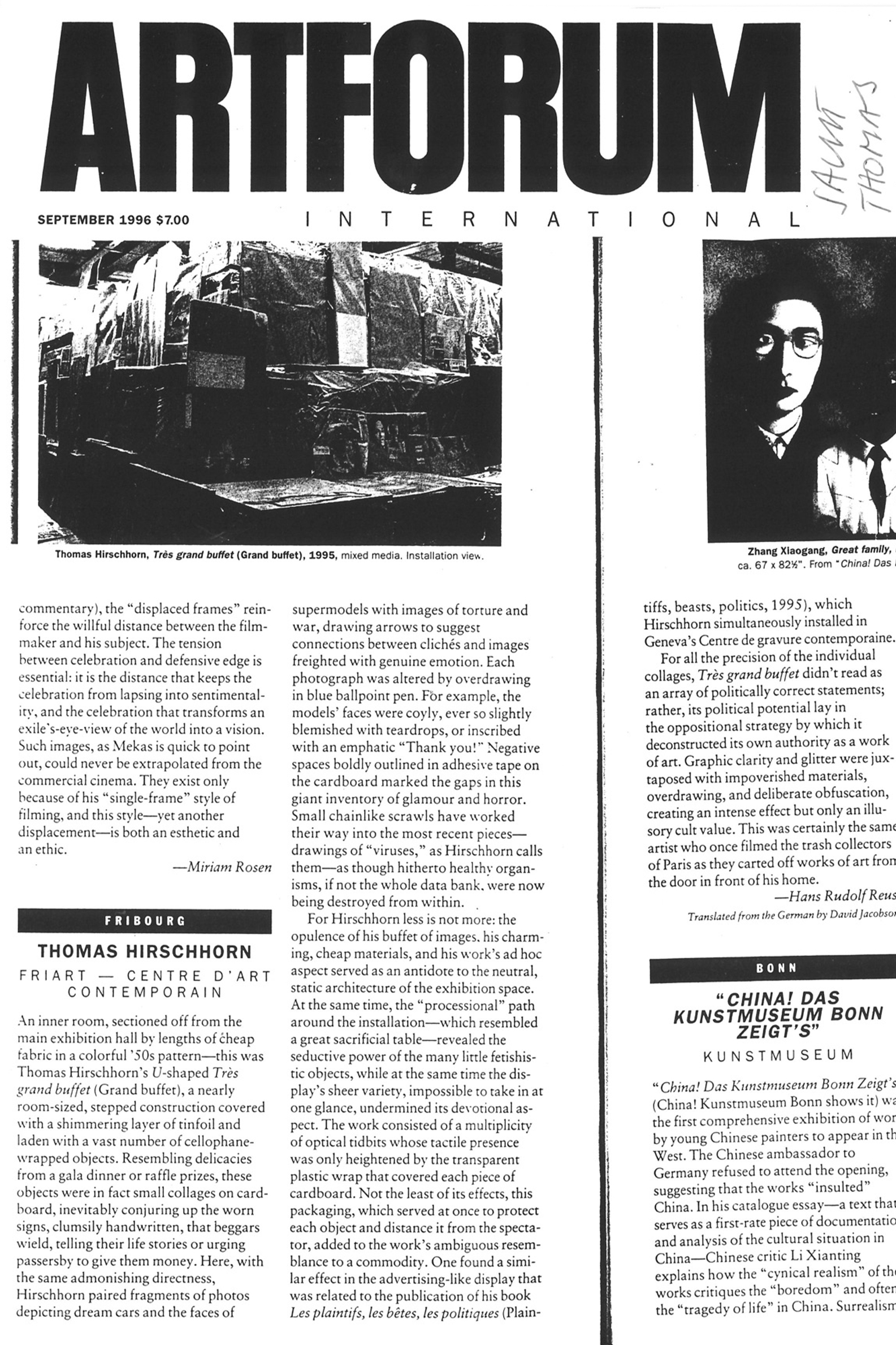1996: Thomas Hirschhorn, Très Grand Buffet

From 5 November to 24 December 1995, Friart presented Thomas Hirschhorn’s work Très Grand Buffet in its main exhibition space at 22 Petites-Rames. Following straight on from Mark Dion’s Unseen Fribourg, this exhibition was one of the biggest the Kunsthalle had brought to Fribourg in the 1990s in terms of the renown of its Swiss and international artists. Thomas Hirschhorn, who began to make a name for himself in France and Germany at the beginning of the decade, had exhibited Buffet in 1995 in a gallery in Frankfurt, a work whose materiality and visual language already prefigured his Fribourg work. Of Swiss origin himself, he was invited to Friart in 1995 by Michel Ritter, who first of all suggested he show his work as part of a group exhibition with two contemporary Swiss artists, with the central role going to Hirschhorn’s work. In the end this idea was rejected and in its place it was decided to exhibit Hirschhorn’s work on its own, occupying the entire space in the main exhibition hall. Friart thus presented the artist’s first solo exhibition in Switzerland and the Kunsthalle (and its link with his work) became part of Hirschhorn’s artistic reflection and universe. In his handwritten description dated 4 September 1995, Thomas Hirschhorn detailed his conception of the exhibition at Friart. He aimed to create “a space within the space”, accessed by breaking through curtains. Inside this space, he wished to achieve “an almost party-like, DIY atmosphere”, that the materials used would help put in place. A large table would be set up, composed of benches made of boards and boxes entirely wrapped in aluminium sheet. Works taken from a series of collages, including various press cuttings annotated by hand, would be placed on this piece of furniture. The impression produced by this work had in part to come from the overall effect and in part from the details of its different components. We know that Thomas Hirschhorn stated that he wanted to do not political art but rather art in a political way. His goal was to create an “active work” and to do so he wanted above all to “get involved personally”. The political dimension of his work came from the methods of creation of the work: he used cheap, easily accessible materials, without trying to intimidate. At Friart, he created an exclusive space using coarse materials that visitors entered by breaking through coloured curtains thus extracting them from the museum context. These two spaces could only be viewed and placed in confrontation with each other as an exclusive presentation. Exhibiting other artists at Friart in the same context would have prevented the coherent implementation of his ideas, whose elan would have been lost had they been part of a group exhibition. For Friart, exhibiting Hirschhorn on his own offered the advantage of involving the Kunsthalle as part of the media discourse on the work of this promising artist.
As of this time, within internationally renowned artistic institutions, Friart would be mentioned as having helped launch Hirschhorn’s career by presenting these works that had such a bright future. Friart director, Michel Ritter’s “principle of inviting artists displaying the coherence and conviction to push themselves to the limits of artistic representation” was moreover highlighted through the exhibition.
Text written in collaboration with Anja Delz, presented as part of the exhibition Friart est né du vide. L’esprit d’une Kunsthalle, MAHF Museoscope, 27.08–17.10.2021.
Translation: Jack Sims

